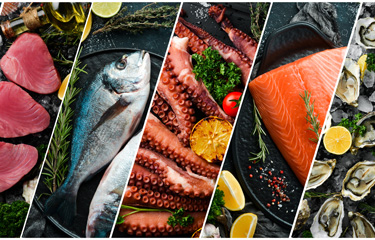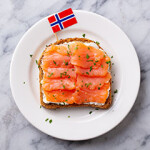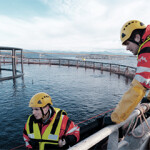Seafood fraud a growing international problem impacting food safety, study finds

A global comparison of reported food fraud across 80 countries and 72 seafood species is the subject of a new paper published in Comprehensive Reviews in Food Science and Food Safety, which found that seafood fraud is a growing international problem impacting food safety.
“The 11 sins of seafood: Assessing a decade of food fraud reports in the global supply chain” examined seafood fraud incidents over the past 10 years reported via the E.U.’s Rapid Alert System for Food and Feed, Decernis's Food Fraud Database, HorizonScan, and LexisNexis databases, in order to analyze the types of fraud that commonly occur.
A majority of these violations were intercepted during border inspections when fraudulent or insufficient documentation was identified. More than half (53 percent) of the issues reported across all four datasets involved the presence of illegal or unauthorized veterinary residues in seafood originating from Asia, particularly Vietnam, China, and India, where antibiotics are employed for both prophylactic and therapeutic use. The top five illegal or unauthorized veterinary residues in aquaculture products were nitrofurans, chloramphenicol, Malachite green, fluoroquinolones, and sulphonamides. Prawns and shrimp were the species implicated the most in reports of seafood adulteration, followed by catfish and tilapia.
Such occurrences mask deceptive and illegal practices in the supply chain, identified by Young’s Seafood in 2013 as the so-called “seven sins” of seafood: species substitution; fishery substitution; illegal, unreported, and unregulated (IUU) fishing; species adulteration; chain of custody abuse; catch-method fraud; and undeclared product extension. Modern-day slavery and animal welfare were added to the list in 2018, and the new study suggests adding illegality related to processing methods, and illegal or unauthorized international trade, as further markers of misrepresentation.
Of all the “sins,” species substitution and adulteration in particular have implications for food safety. As one of the top food allergens, seafood poses a risk to human health through accidental exposure if a species is mislabeled, resulting in potential systemic immunological reactions and anaphylaxis in vulnerable persons. Allergic reactions can also be triggered by consumption of fish treated with illegal or unauthorized antimicrobials routinely used in aquaculture. Alternatively, high-level predators such as swordfish passed off as other species, with the risk of exposing consumers to methylmercury that gathers at the top of food chains.
The paper cites examples of substitution including monkfish substituted for pufferfish in Senegal and the Gambia, and 10 metric tons of fake jellyfish made from sodium alginate, calcium chloride, and aluminum sulphate produced and distributed in China in 2015. A report of snapper substitution in New York City, U.S.A. found higher mercury levels than typically present in the species, and Vietnamese catfish sold as grouper in the United States tested positive for malachite green and enrofloxacin.
Additionally, the report noted aquafeed had been found containing the banned pesticides hexachlorobenzene and β-hexachlorocyclohexane, which are associated with adverse health outcomes when consumed by humans. Other reports noted the presence of ruminant DNA, which is not permitted in aquaculture to prevent the transmission of transmissible spongiform encephalopathies.
The largest number of reports were found in 2018, particularly for species adulteration, with 69 percent of these due to the presence of unauthorized or illegal veterinary residues. There was also increased reporting of nitrates on fraudulently treated tuna in that year.
Processing, which provides ample opportunity to mix or substitute cheaper fish or bulking ingredients, was the third-most vulnerable area of the supply chain, with more reports in secondary than in primary processing. Fraud can be hard to detect when seafood is processed and other textures and flavors are introduced, the report found. Squid and anchovy were the species found to be most-often involved in illegal processing cases, notably in China.
Ghana and Nigeria were the source of most reports of discrepancies in African products, mainly related to the illegal import of smoked and dried fish destined for ethnic communities in Europe. Traditionally smoked fish from these countries can contain unsafe levels of polycyclic aromatic hydrocarbons (PAHs), which are carcinogenic and genotoxic.
The study also identified supply chain pathways vulnerable to criminal practices. In response to its findings, it urged better recording of fraud cases through a standardized dataset and for additional study of the current vulnerabilities and risks in the seafood supply chain, with the aim of preventing and mitigating fraudulent practices.
The researchers concluded with the warning that as seafood production increases to meet rising global demand, the opportunity for deceptive and illegal activity compromising the food safety of global seafood supply chains will also increase. Globally, the external pressures of COVID-19 are likely to increase the possibility of food fraud, and this risk is compounded for European seafood producers and U.K.-based seafood exporters by the ongoing economic and nontariff barriers imposed by Brexit, the paper found.
Photo courtesy of YARUNIV Studio/Shutterstock






Share